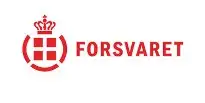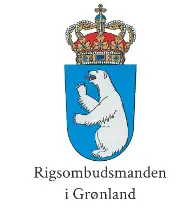A number of authorities in Denmark and Greenland are responsible for ensuring that ships can safely navigate Greenland waters and ports. The following section provides a brief description of the main authorities’ areas of responsibility and the services they provide for use for navigation.

Danish Maritime Authority
Danish Maritime Authority is an agency under the Ministry of Business and Growth.
Navigational safety in Greenland waters and the Arctic are two of the Danish Maritime Authority’s key areas of responsibility.
Danish Maritime Authority, in cooperation with the Joint Arctic Command and the Danish Meteorological Institute (DMI), has compiled a safety package with information on safety regulations and international recommendations. The safety package highlights the special circumstances that apply to navigation in waters of Greenland and the Arctic.
Read more under Navigational Safety.
Danish Maritime Authority publishes weekly Notices to Mariners (EfS). Notices to Mariners announce matters of importance for maritime traffic in Danish and adjacent waters, as well as waters around the Faroe Islands and Greenland.
Read more under Navigational Planning.

Danish Geodata Agency
Danish Geodata Agency is an agency under the Danish Ministry of Climate, Energy and Utilities.
Danish Geodata Agency publishes the official Danish charts covering the waters around Denmark and Greenland. The Danish Geodata Agency issues paper charts and electronic navigational charts (ENC) in various scales covering the waters of Greenland. These charts make possible the planning and execution of navigation in Greenland waters. The Danish Geodata Agency also publishes nautical publications, which are also used in the planning and execution of navigation in Greenland waters. Finally the Danish Geodata Agency publishes the Danish Chart Corrections describing the corrections that are necessary in order to maintain the Danish Geodata Agency’s paper charts and nautical publications covering the waters around Denmark and Greenland.
Read more under Navigational Planning.
Danish Geodata Agency also carries out hydrographic surveys for use in the production of charts, including for the waters around Greenland.

Danish Meteorological Institute (DMI)
DMI provides meteorological services in the Commonwealth of the Realm of Denmark, the Faroe Islands, Greenland, and surrounding waters and airspace.
Meteorological services include forecasting and warnings and monitoring of weather, climate and related environmental conditions in the atmosphere, on land and at sea.
Purpose of all activities is to safeguard human life and property. DMI’s many activities also act as background knowledge in terms of planning and decision-making in economic and environment sectors - especially within transport and industry businesses.
The Centre for Ocean and Ice (COI) is DMI’s department of marine information and consultant services. Among the Centre’s core areas are surge warnings, ice charting, waves, ocean currents, satellite surveillance, ocean climate and marine data.
The Greenland Ice Service is part of the Centre for Ocean and Ice and is divided into a reconnaissance service, Ice Patrol Narsarsuaq, as well as a satellite-based unit, the DMI Ice Service in Copenhagen.
The Ice Patrol is staffed with navigators throughout the year and has a helicopter at its disposal for inshore ice reconnaissance. Reconnaissance is generally done 2-3 times a week. The DMI Ice Service is staffed with specially trained personnel for the analysis of satellite data for ice information.
Read more under Radio Services.

Joint Arctic Command (JACMD)
JACMD is an authority under the Danish Armed Forces. JACMD is located in Nuuk (Godthåb).
The primary tasks of the Joint Arctic Command in Greenland are sovereignty assertion, including monitoring and fisheries inspection, search and rescue, hydrographic survey, station services, planning of defence tasks, marine environmental monitoring and participation in pollution prevention, the mandatory ship reporting system GREENPOS, broadcasting navigational warnings via Kalaallit Nunaata Radioa (KNR) and the coastal radio stations. AKO is also responsible for operating NAVTEX.
Read more under Radio Reporting Services, Radio Services and the Rescue Service.

The Greenland Police
As a national authority, the police district is organized under the Danish Ministry of Justice. Overall, the Chief Constable of Police is the senior figure in the police district and has office in the capital, Nuuk (Godthåb), along with the police’s central administration.
The Chief Constable of Police is responsible for the management of the local rescue service, which carries out search and rescue operations in local waters and for search and rescue operations on land.
Read more under the Radio Services.
Contact information is available from the police Contact information Police Greenland.

Naalakkersuisut (Government of Greenland)
Shipping is one of the cornerstones of Greenland’s infrastructure. This ensures cohesion in a society that is challenged by extensive distances and a geographically dispersed population.
Whether it’s recreational sailing, fishing or the transportation of goods and passengers, shipping is the key to getting around the country. The maritime area is not centralised, which means that legislation in this area is developed by Denmark, but is adapted to the conditions in Greenland. The mutual understanding between Greenland and Denmark in this area has been built up through regular contact meetings between representatives from the Government of Greenland and the Danish Maritime Authority.
There is a total of 180-200 harbour, pontoon and quay structures in Greenland.
The Government of Greenland’s harbour section is responsible for the maintenance and repair of virtually all the port facilities in the towns and settlements.
It is also the responsibility of the harbour section to ensure that the fisheries, passenger and freight transport sectors have access to maintained berths in the towns and settlements.
The Government of Greenland is also responsible for the central harbour authority, which means harbour legislation and regulations. The local harbour authority is exercised in most of the towns by Royal Arctic Line. In settlements and in Qeqertarsuaq (Godhavn) and Illoqqortoormiut (Scoresby), this is handled by KNI Pilersuisoq, while Mittarfeqarfiit (the Greenland Airport Authority) is responsible for the local harbour authority in Kangerlussuup Umiarsualivia, Narsarsuaq and Kulusuk.
For further information on supply, harbours, airports and transport, see the website of the Government of Greenland.

The High Commissioner
The High Commissioner of Greenland is an institution under the Prime Minister’s Office.
The High Commissioner of Greenland is the Kingdom’s senior representative in Greenland and is responsible for liaising between the Government of Greenland and the Danish authorities. The Government of Greenland may invite the High Commissioner to participate in negotiations. The Government of Greenland must also notify the High Commissioner without delay regarding all statutes and regulations adopted by the Landsting and of any other general legislation issued by the Government of Greenland.